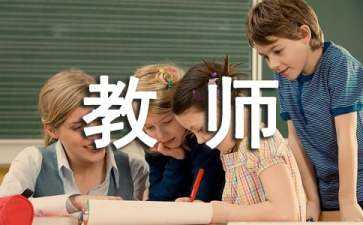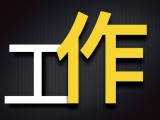unit 4 astronomy: the science of the starspart 1 teaching design 第一部分 教学设计period 1 a sample lesson plan for reading(how life began on the earth)introductionin this period, after the warming up, students will first be guided to talk and share. then they will be helped to read an exposition(说明文)entitled how life began on the earth. then the students may be asked to listen and read aloud,read and underline,read and understand difficult sentences,read and transfer information,read and translate, read to decide on the type of writing and summary of the text and finally read to draw a tree diagram of the text and retell the story with the help of the diagram. the period will end in students having a discussion—how did the uni verse begin? objectivesto help students understand the text’s forms and contents and learn about festival astronomy to help students communicate on the topic in focus with the words, expression s and structures learned in this unitfocuswords dissolve, exist,puzzle,crash,pull,float,exhaustexpressions in time, lay eggs, give birth to, block out, cheer up, now that, break out, watch outpatterns 1. it exploded loudly with fire and rock, which were in time to produce the water vapor, carbon dioxide, oxygen, nitrogen and other gases, which were to make the earth’s atmosphere. 2. nobody knew that it was going to be different from other planets going round the sun. 3. it allowed the earth to dissolve harmful gases, which had become part of the earth’s atmosphere, into the oceans and seas. 4. this encouraged the development of early shellfish and all sorts of fish. 5. they produced young generally by laying eggs. 6. they are putting too much carbon dioxide into the atmosphere, which prevents heat from escaping from the earth into space. 7. whether life will continue on the earth for millions of years to come will depend on whether this problem can be solved. aids multimedia faciliti es, tape-recorder, photos, diagramsproceduresi. warming up by learning vocabularygood morning, class! today, we are going to take unit 4 astronomy: the science of the stars. before we read the text, let’s turn to page 99 and get familiarized with the vocabulary first. pay attention to the making of the word. study the prefixes, roots and suffixes in the words.ii. pre-reading1. looking and sayinghave you ever wondere d how the universe began? well i'm sure you may have many answers to this question, but i have one that perhaps, you may not have heard of yet. i will be giving you my theory on this subject. now look at the screen and listen to me telling you something exciting. 科学家透露:宇宙可能有两个我们的宇宙和一个"隐藏的"宇宙共同"镶嵌"在"五维空间"中。在我们的宇宙早期,这两个宇宙发生了一次相撞事故,相撞产生的能量生成了我们宇宙中的物质和能量。 2. t alking and sharingdo you know how the universe began?i n the 1920s in california, astronomer edwin hubble observed distant galaxies using an extremely powerful telescope. he made two mind-boggling (unbelievable) discoveries. first, hubble figured out that the milky way isn’t the only galaxy. he realized that faint, cloud-like objects in the night sky are actually other galaxies far, far away. the milky way is just one of billions of galaxies. second, hubble discovered that the g alaxies are constantly moving away from each other. in other words, the universe is expanding. the biggest thing that we know about is getting bigger all the time. a few years later, belgian astronomer georges lemaître used hubble‘s amazing discoveries to suggest an answer to a big astronomy question: “how did the universe begin?” 3.listening and reading aloudnow please listen to the recording and then read the text aloud. pay attention to how the native speaker is reading along and where the pauses are within each sentence. i will play the tape twice and you shall read aloud twice, too.4. reading and underliningnext you are to read and underline all the useful expressions or collocations in the passage. copy them into your notebook after class as homework.collocations from how life began on the eartha cloud of energetic dust(具有能量的尘埃), combine into…(合成……), move around the sun(环绕太阳运转), become violent(变得激烈), the solid surface(固体表面), explode loudly(猛烈爆炸), in time(及时,最终), produce the water vapor(产生水蒸汽), make the earth’s atmosphere(构成了地球的大气层), cool down(冷却), on the surface(在表面), be different from…(与……不同), go round the sun(环绕太阳运转), disappear from…(从……消失), stay on…(存留在……), show one’s quality(显现某人的特性), dissolve harmful gases(分解,溶解有害气体), become part of…(变成……的一部分), develop life(发展生命), grow in the water(在水里生长), fill… with…(用……来填充……,充满了……), encourage the development of…(鼓励……的发展), millions of years later(几万年以后), live on land(在陆地上生活), live in the sea(在海里生存), grow into forests(长成森林), produce young(生出幼仔), lay eggs(下蛋), animals with hands and feet(长着手脚的动物), spread all over the earth(遍布全世界), develop new methods(发展了新的方法), grow food(种植), move around(迁徙), go by(过去,推移), take care of…(在意……,照看好……), put…into…(把……带入,放入……), prevent…from…(防止……做……), escape from… into…(从……逃离到……), become hot(变热), depen d on….(依靠,依赖,取决与…… ), solve a problem(解决一个问题) 3. reading and understanding difficult sentences skim the text and identify the difficult sentences of each paragraph. you may put your hand up if you have any questions. 4. reading and transferring informationread the text again to complete the table below, how life began on the earthwhat was the earth like after the “big bang”? why was the earth different? how was life developed on earth? what did small clever animals do?
how life began on the earthwhat was the earth like after the “big bang”? a cloud of energetic dust at first and then a ball around the sun. in time as a result of its explosion, water vapor and many other gases were produced to make the earth’s atmosphere. water then appeared when it cooled down, offering the possibility for the beginning of life.why was the earth different? the arrival of small plants growing in the water filled the oceans and seas with oxygen, encouraging the development of small living things.how was life developed on earth? carbon dioxide and air with oxygen helped life developed. first were insects and amphibians, and then appeared reptiles and dinosaurs, producing young by laying eggs. at first, came mammals producing young from within their bodies.what did small clever animals do? with hands and feet, they spread all over the earth, developing new methods of growing food, hunting and moving around, yet neglecting the environment protection, causing new problems for human being’s existence for good.5. reading the text once again to decide on the type of writing and summary of the texttype of writing this is a descriptive writing.main idea of the passage the earth came i nto being after the “big bang”. then small plants came growing in the water, followed by green plants appearing on land. in the end a ppeared small clever animals.topic sentence of 1st paragraph after the “big bang”, the earth was just a cloud of energetic dust.topic sentence of 2nd paragraph the earth was different because of the arrival of small plants growing in the water.topic sentence of 3rd paragraph many millions of years later the first green plants began to appear on land.topic sentence of 4th paragraph small clever animals appeared and spread all over the earth.6. going over the text to make a tree diagram and retell the story with its help
7. reading and translatingas y ou have read the text times, you can surely put it into chinese. wang hongqin, will you be the first to have a try, of putting the first paragraph into chinese. 8. closing down by watching a movie entitled from the earth to the moon《从地球到月球》through dramatization, this series relates the story of the conquest of the moon by the americans, from the mercury and gemini projects to the legendary apollo missions. “这是我的一小步,却是人类的一大步。”美国太空人尼尔阿姆斯壮在1969年踏上月球的那一刻留下了这句名言。这句话代表人类文明的跃进,宣告了太空时代的到来。在阿姆斯壮登月近三十年后,好莱坞巨星汤姆汉克斯、金奖导演朗霍华与王牌製作人布莱恩葛瑟三人斥资6800万美金将美国登陆月球的太空计画拍摄成迷你影集【飞向月球】,重现当年太空人的奋斗历程,并在充满史诗的气魄中纪录了所有的艰辛、骄傲、失败与悲壮的牺牲,为人类的文明写下了精彩的一页。
推荐站内搜索:消防工程师报名入口、南宁考试网、学习雷锋精神演讲稿、山东专升本报名网站、教师资格证考试时间、河南教师资格证成绩查询、河北自学考试成绩查询、贵州省高等教育自学考试成绩查询、周记600字大全、电影观后感1000字


 The science of the stars
The science of the stars



